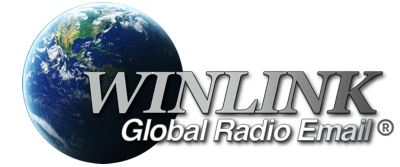Remembering Hurricane Katrina
Ten years ago this month, Hurricane Katrina made landfall on the Gulf Coast of the US. Katrina was the deadliest hurricane to strike the United States since the Palm Beach-Lake Okeechobee hurricane of September 1928. It produced catastrophic damage and was the costliest U. S. hurricane on record, says the National Hurricane Center.
Below is an excerpt from "A Failure of Initiave", the report of a select committee of the US Congress to investigate the preparation for and response to Hurricane Katrina. Most say it is the ultimate "after action" report. The NCS is the National Communications System. SHARES is the Shared Resources High Frequency Radio Program, then run by NCS. Though Winlink was not used as a part of SHARES then, we are proud to say it is now integrated into the organization, and uses trained volunteer radio amateurs and government operators licensed through SHARES and the Department of Homeland Security. During the Katrina recovery, Winlink was fully credited for it's use by radio amateurs.
"The NCS also maintains the Shared Resources High Frequency Radio Program (SHARES), which provides a single, interagency, voluntary message handling system using over 250 High Frequency (HF) radio frequencies when other communications are unavailable. A network of government, military, and Military Affiliate Radio Service (MARS) radio stations (an organized network of Amateur Radio stations affiliated with the different branches of the armed services to provide volunteer communications), and more than 90 federal, state, and private industry organizations participate in the SHARES program. Within days following Katrina’s landfall, the NCS coordinated participation by 431 SHARES stations across the nation and assisted first responders conducting search and rescue missions by relaying information to appropriate government agencies; relayed logistical and operational information between FEMA’s EOCs in Georgia, Mississippi, and Louisiana; relayed health and welfare messages between volunteer agencies in Georgia and the national headquarters of the American Red Cross in Washington, DC; established radio contact with deployed U.S. Navy ships detailed to New Orleans; and provided frequency coordination between federal agencies, Louisiana and Mississippi’s EOCs, and the Civil Air Patrol.
Additionally, the NCS coordinated the frequencies used by the nearly 1,000 Amateur Radio Emergency Services (ARES) volunteers across the nation who served in the Katrina stricken area providing communications for government agencies, the Red Cross and the Salvation Army. Emergency communications were conducted not only by voice, but also by high-speed data transmissions using state-of-the art digital communications software known as WinLink. In Mississippi, FEMA dispatched Amateur Radio operators to hospitals, evacuation centers, and county EOCs to send emergency messaging 24 hours per day. According to Bay St. Louis Mayor Edward A. “Eddie” Favre, amateur radio operators were especially helpful in maintaining situational awareness and relaying Red Cross messages to and from the Hancock County EOC. At airports in Texas and Louisiana, radio amateurs tracked evacuees and notified families of their whereabouts. The Red Cross deployed amateur radio volunteers at its 250 shelter and feeding stations, principally in Mississippi, Alabama, and Florida.
...
Following landfall, the NCS activated the SHARES network on August 29, and worked with The U.S. Northern Command (NORTHCOM) to identify and deploy communications assets, and by September 2, all NCS ESF 2 systems were in place to receive communications requests from the affected region. The NCS dispatched satellite communications vans to various locations, including New Orleans City Hall, the Louisiana State Police headquarters in Baton Rouge, the New Orleans Airport, and the Louisiana National Guard in Jefferson Parish; dispatched AT&T and MCI cellular communication vans to the state EOCs in Mississippi and Louisiana; and identified and delivered satellite handsets to first responders in all three affected states. Additionally, the NCS designed and installed a new E-911 system in Plaquemines Parish, and provided an interim digital Land Mobile Radio system to the eight parishes surrounding New Orleans."
[page 177, "A Failure of Initiave", https://www.uscg.mil/history/katrina/docs/USHouseOfRepKatrina2006MainR1e...
